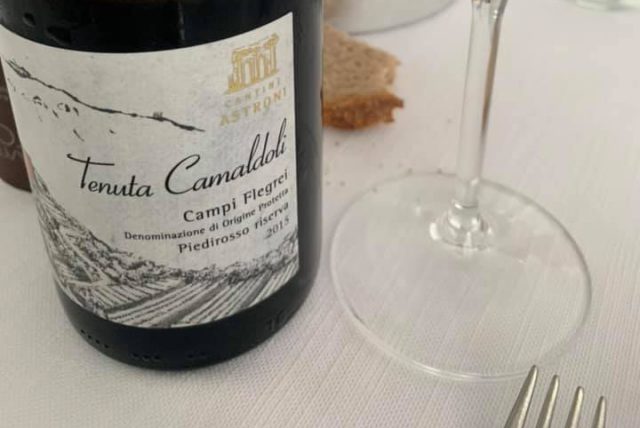An instructive visit to Ronchi di Cialla
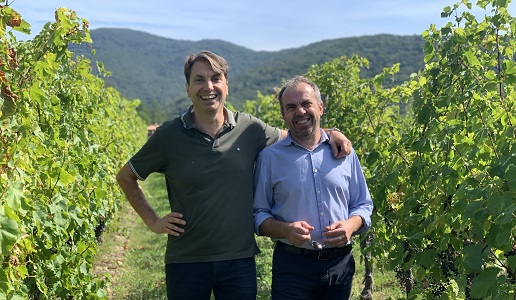
During a visit with the Rapuzzi family, our correspondent confesses to have fallen in love with their Schioppettino, while at the same time recognizing the validity of their other reds and their white wines.
Ronchi di Cialla is a family estate in Friuli where, since the 1970s, the Rapuzzi family cultivates only native grapes in Prepotto, the Cialla Valley. It was realization of Paolo and Dina Rapuzzi’s a life-changing dream and although Paolo is no longer with us, Dina and their sons Ivan and Pierpaolo carry on his mission. And they do this with skill, respect and a pinch of obstinacy.
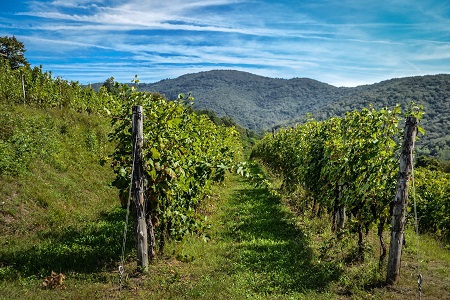 And it was this obstinacy, this life change, which forever transformed winemaking in the area starting in the 1970s. Over time, their vines have grown accustomed to living according to the rhythm of nature, in harmony with the environment and those who inhabit it. The result are wines with a moderate alcohol content, self-regulating production levels and which ferment spontaneously. There are some older vintages available on the market that are as much as 40 years old. Whether the wine be a Verduzzo or a Pignolo, the sensation that distinguishes the entire line of production is a persistent and penetrating salinity. The estate is a “Biodiversity Friend”.
And it was this obstinacy, this life change, which forever transformed winemaking in the area starting in the 1970s. Over time, their vines have grown accustomed to living according to the rhythm of nature, in harmony with the environment and those who inhabit it. The result are wines with a moderate alcohol content, self-regulating production levels and which ferment spontaneously. There are some older vintages available on the market that are as much as 40 years old. Whether the wine be a Verduzzo or a Pignolo, the sensation that distinguishes the entire line of production is a persistent and penetrating salinity. The estate is a “Biodiversity Friend”.
The family’s aged white wines have for years left their mark. At the top is their Picolit Cialla Friuli Colli Oridentali 2008, made with grapes from a Picolit Cru. The vines grow in the forest, on hillside terraces, constantly cradled by the wind and adequately kissed by the sun. Picolit is a varietal that demands much time and patience, with unequal and not very generous yields which in some years, conditions permitting, is made in a dry version. Sôl is decidedly an unusual wine, one that expresses the sun and life. I tasted a 2009 that was still vibrant, taut and vertical in the mouth and with a Mediterranean nuance.
While the whites convinced me, I fell in love with their reds. They cultivate Pignolo, Refosco dal Peduncolo and Schioppettino and I feel it is my duty (and moral obligation) as well as desire to tell you about how the Rapuzzi family saved this latter varietal. And it is my hope that, after reading this, you will immediately want to try it.
Some background: Schioppettino is a native Friuli red grape with bunches that have a medium-to-sparse density, large fruit with a skin/pulp ration that favors the fruit and that is rich in tannins and poor in anthocyanins. Although it is native and historically documented, in the 1960s is was all but extinct, so much so that it was not included in the official list of varietals authorized to be cultivated and used for winemaking.
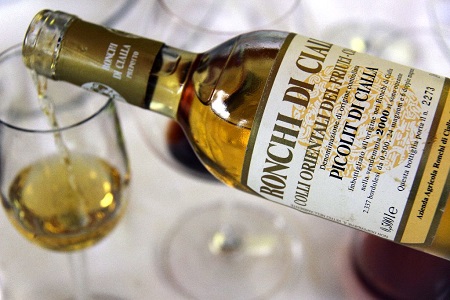
It was in the early 1970s when his obstinacy, together with a little bit of recklessness, inspired Paolo Rapuzzi to embark on a life change. He has been a farmer for only a short time when he read and heard about the role this grape, which had basically disappeared, had on his area. Convinced that there must have been a reason why its reputation was still so intact, he decided take a risk and cultivate it. He learned that 70 plants of the varietal still existed and of these 30 belonged to the then-mayor or Prepotto, a key figure who did not hesitate to help him. And so it came to be that, vine in hand, his obstinacy and recklessness were joined by a certain intuition, an intuition that this varietal absolutely needed to be preserved.
He cloned the vines and planted them under a false name, running the risk of facing legal action, seeing his vines uprooted and being banned from winegrowing. But as luck with have it, and luck is always a good thing, among the first to fall in love with his wine was Luigi Veronelli, who was on the tasting commission which that year awarded the “Barbatello d’Oro” prize. Rapuzzi’s Schioppettino won and thus not only was the cat out of the bag, but everyone liked the wine which easily beat the competition. This occurred also thanks to thesupport of an authoritative figure like Veronelli and the fact that the prize, once awarded, could not be given not taken back. And so, in 1976, Schioppettino was officially authorized and the varietal was added to the official list.
The wine’s first official vintage was 1978 and it was a 100% Schioppettino from Ronchi di Cialla. Thus, starting in 1978, this wine was no longer just only a local legend but also one that could once again reflect a territory… and the rest is history!
During my visit with the Rapuzzi family, not only did I enjoy the moving stories of mother Dina, as well as witness the notable skill of her two sons, but I also had the pleasure of tasting their full line of production. From the blend Ciallabianco 2016 to the intriguing nuances of Picolit and Verduzzo, both the sweet and dry wine. And last but not least there was an enthusiastic vertical tasting of Schioppettino: 2015, 2004, 1996, 1992, 1986 and 1983, all still available retail.
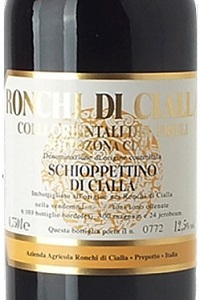 Schioppettino di Cialla Friuli Colli Orientali sottozona Cialla 2015
Schioppettino di Cialla Friuli Colli Orientali sottozona Cialla 2015
93 - € 40
Made from Schioppettino grapes and matured for 12 months in barriques where it undergoes malolactic fermentation. A ruby color with pink reflections and a bouquet with a note of dog rose, one between sweet and spice, along with a typical scent of black pepper. The mouthfeel is a mix of creaminess and freshness with flavors of cherry and crispy plum. It is flavorful and persistent while at the same time still lithe with a wrapping sensation. This promises an abundant propensity to improve with age.
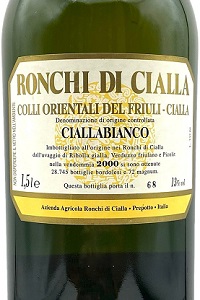 Ciallabianco Friuli Colli Orientali sottozona Cialla 2016
Ciallabianco Friuli Colli Orientali sottozona Cialla 2016
91 - € 25
A blend of 60% Ribolla Gialla, 30% Picolit and 10% Verduzzo that ferments in barriques and matures in wood on the lees for 12 months. A straw-yellow color and a bouquet with sweet notes of mulberry and yellow plum, along with a vegetal hint of medicinal herbs and floral ones of acacia and rose. The mouthfeel is creamy and very flavorful, vertical and with a bitter finish.
Related Products
| Product | Producer | Date of publication | Author | Read | |
|---|---|---|---|---|---|

|
Schioppettino di Cialla 2015
Friuli Colli Orientali |
Ronchi di Cialla | 11/10/20 | Sissi Baratella |
Made from Schioppettino grapes and matured for 12 months in barriques where it undergoes malolactic fermentation. A ruby color with pink reflections and a bouquet with a note of dog rose, one between... Leggi tutto |

|
Ciallabianco 2016
Friuli Colli Orientali |
Ronchi di Cialla | 11/10/20 | Sissi Baratella |
A blend of 60% Ribolla Gialla, 30% Picolit and 10% Verduzzo that ferments in barriques and matures in wood on the lees for 12 months. A straw-yellow color and a bouquet with sweet notes of mulberry... Leggi tutto |

|
Ronchi di Cialla
|
11/13/14 | Redazione |

 Italiano
Italiano







